Part 62: Okinawa: May 2, 1945

We've spent about a month on this island, and progress so far as been minimal. We seemed to hit a wall for a while. However, it also appears we're finally about to break it down, and if we can get our offensive in gear, we may be able to salvage this battle.
Allied Turn 10 (USA): May 2, 1945
Cloudy (Mud)
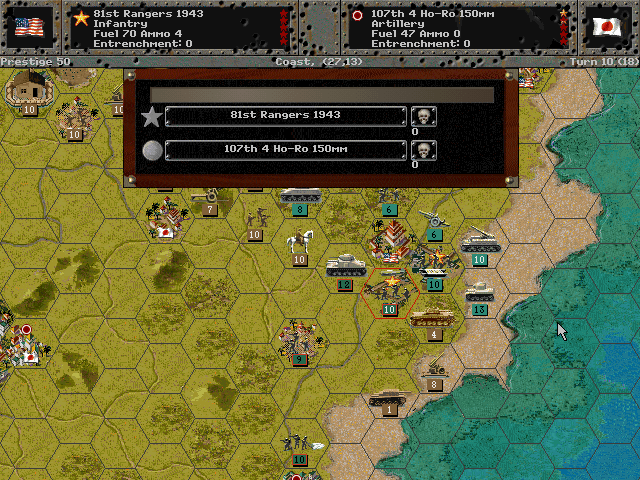
We've finally achieved victory at Yonabaru airfield, and we also cleared the road to the village.
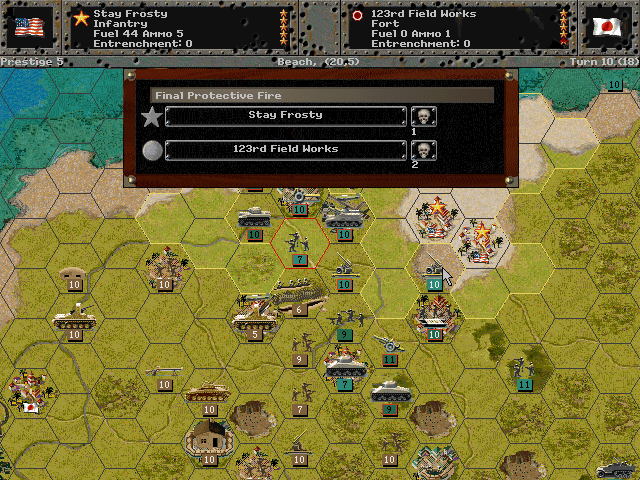
The field works at Kakazu is starting to weaken, too.
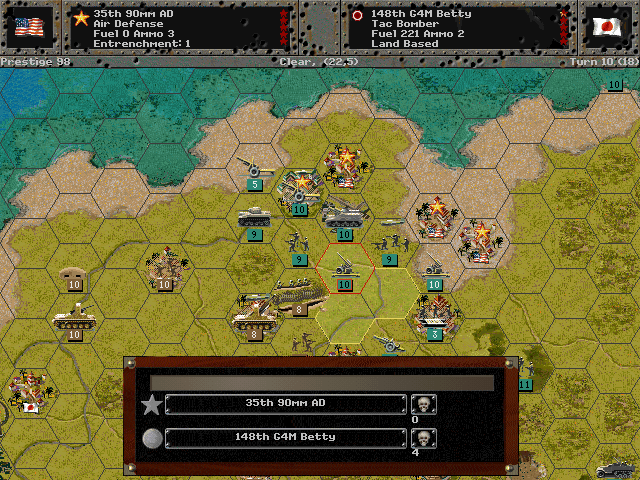
Air defense guns make up for the lack of interceptors on our side.
Axis Turn 10 (Japan): May 2, 1945
Cloudy (Mud)
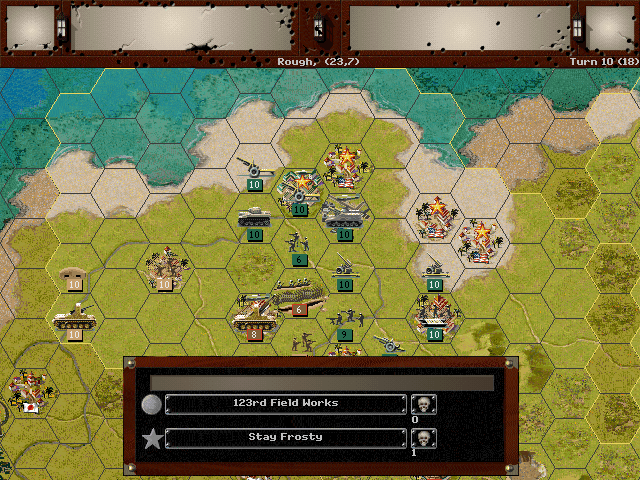
The slow battle for Kakazu continues.
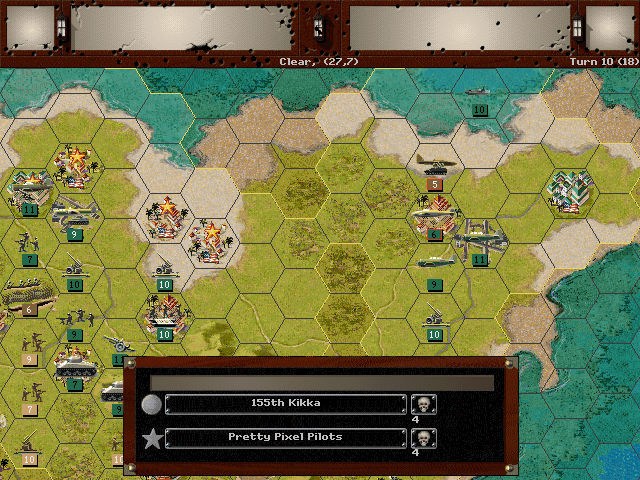
About the only serious fighting today is a last-ditch effort of the jet fighters to knock out some of our fighters.
Allied Turn 11 (USA): May 5, 1945
Fair (Dry)
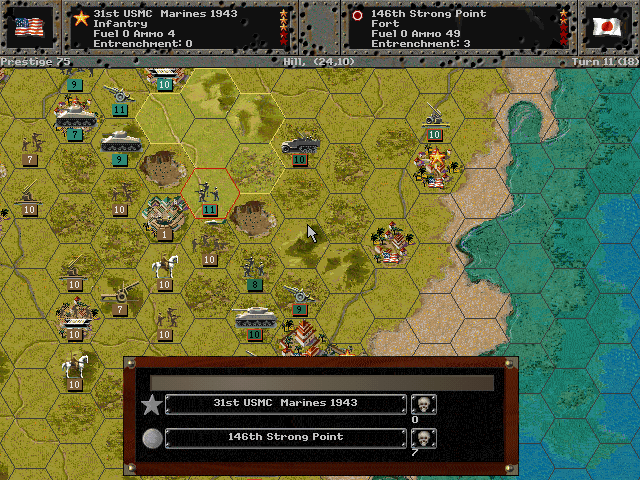
We start to break down more defensive structures.
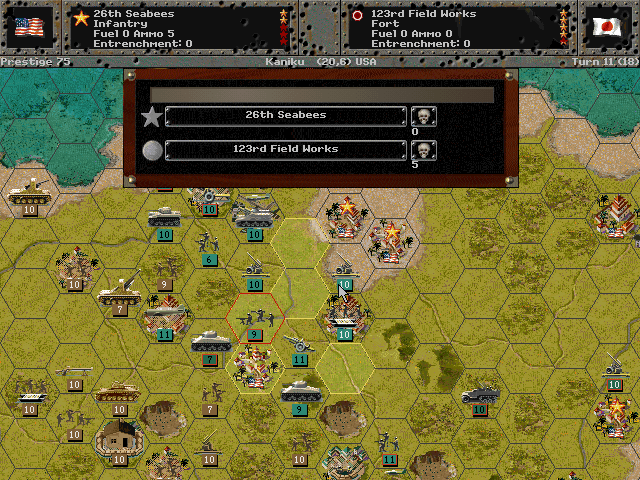
The Seabees demolish the Kakazu field works. The Japanese line is broken!
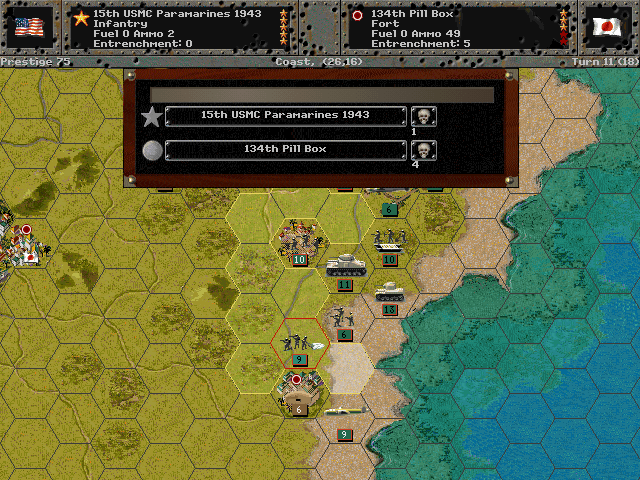
The attack on Yonabaru village gets underway as well, with the replenished paratroops leading the charge.
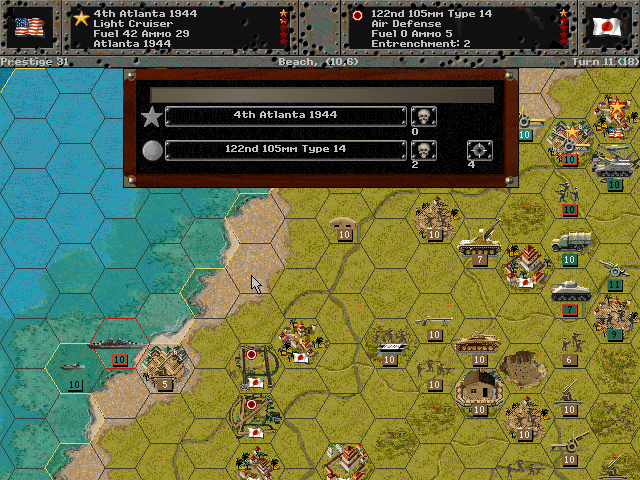
The naval vessels work on softening the defenses along the coast road.
Axis Turn 11 (Japan): May 5, 1945
Fair (Dry)
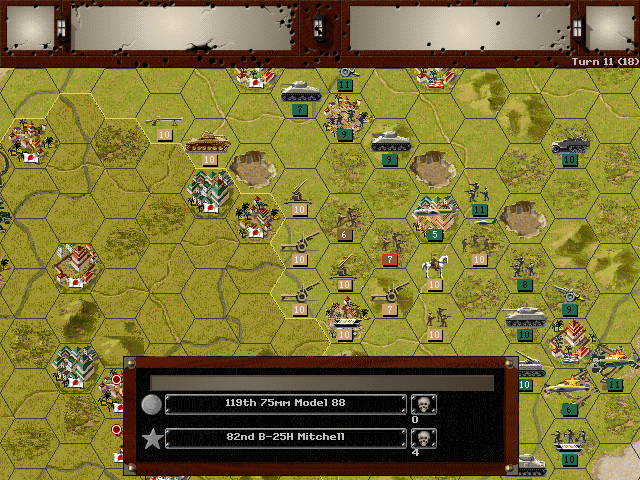
Now we're getting in range of some very serious flak.
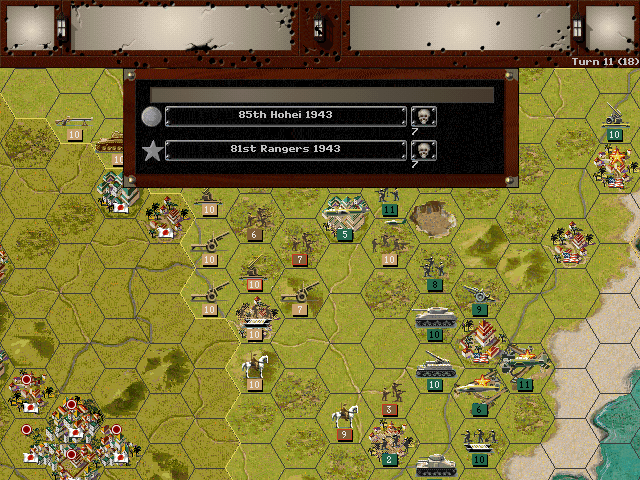
The Japanese cavalry deals heavy damage to the Army units.
Allied Turn 12 (USA): May 8, 1945
Fair (Dry)

We start to move forward against the weakened line.

Yonabaru village surrenders.
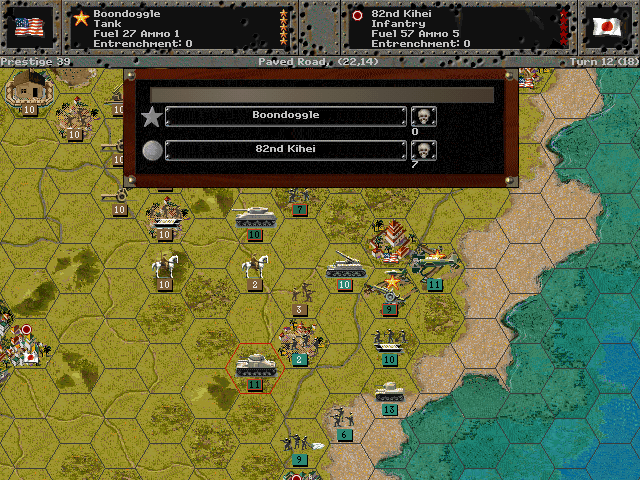
We need to start the drive toward Shuri; Boondoggle gets things underway.
Axis Turn 12 (Japan): May 8, 1945
Fair (Dry)
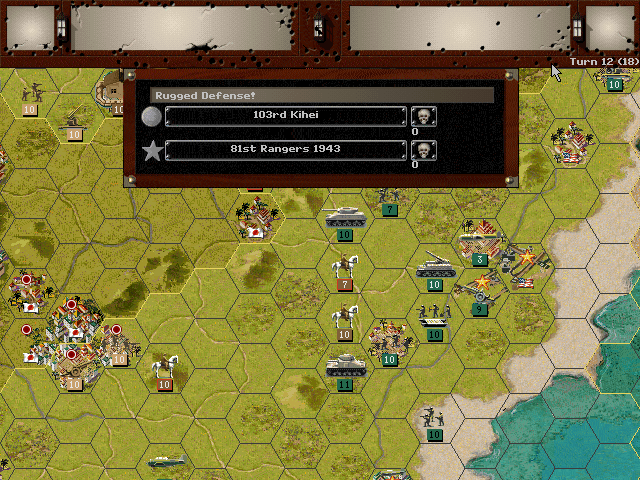
The enemy cavalry seem to be quickly losing their will to fight us.
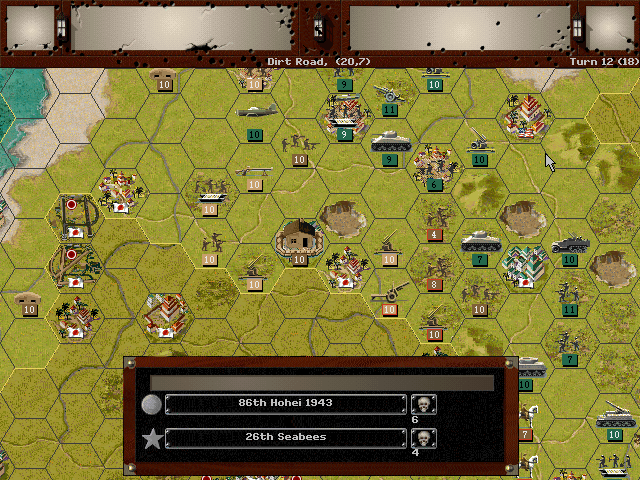
Attacks on the Machinato side continue with high casualties on both sides.
Allied Turn 13 (USA): May 11, 1945
Fair (Dry)
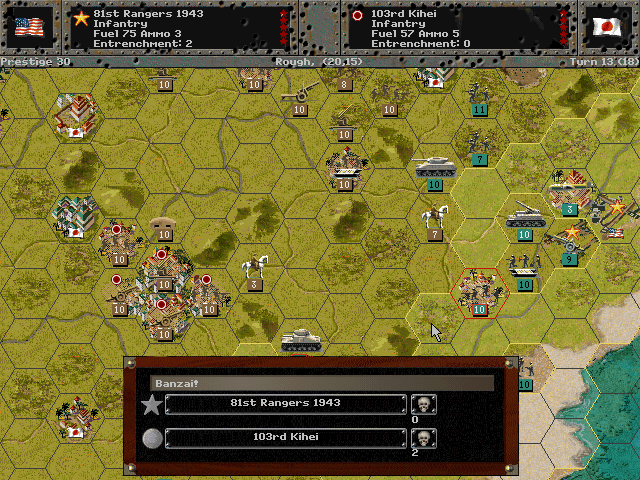
The poorly-supplied Japanese units fall back as soon as we start the push to Shuri.
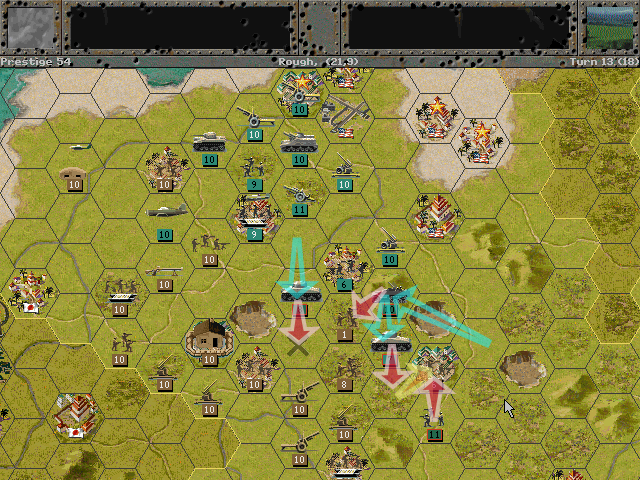
We knock out some of the flak guns and cut off Tanabaru.

On the other side of the island we start to move down the road to Machinato.
Axis Turn 13 (Japan): May 11, 1945
Fair (Dry)
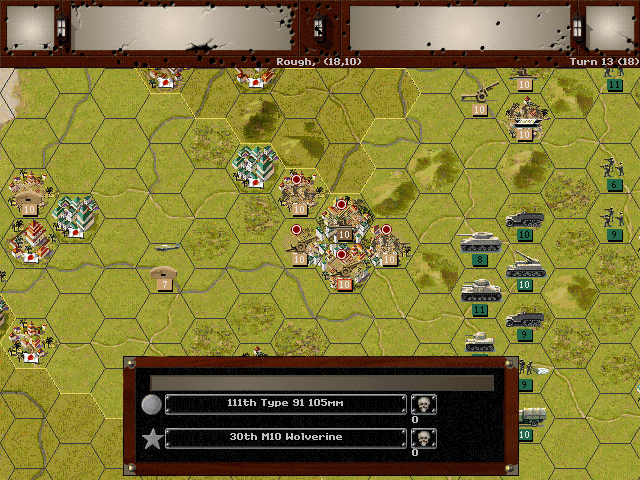
Nearing Shuri, we come under sporadic artillery fire. It's unable to do any damage.
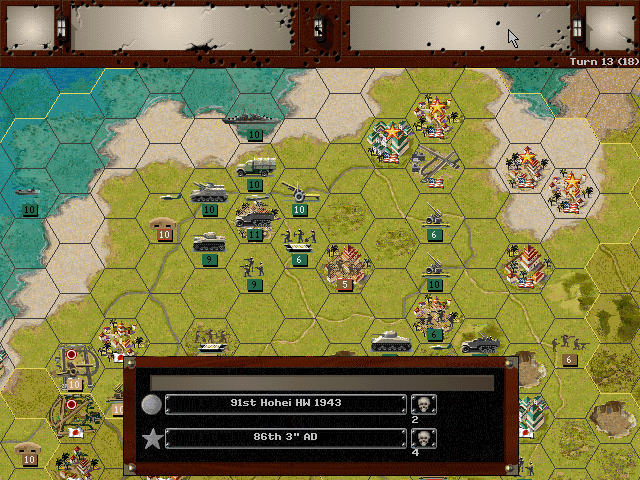
Kakazu still has some forces remaining around it. The village is temporarily retaken.
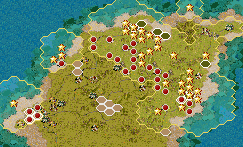
Bofors 40mm Anti-Aircraft Gun
PG Name: 40mm AD Type: Air Defense
Effective Date: 11/42
Value:12 Cost:96 Spot:1 Move:1 MM:Gun Trans:Air Fuel: 0
Init:2 Range:2 SA:[9] HA:[12] AA:11 NA:0 GD:2 AD:4 CD:0 TT:Soft Ammo:10
The 40mm Bofors, a Swedish design, was considered one of the best AA guns of the war. It originated a decade before the war, and was used by several European nations, including the British. It took a bit of negotiation to allow it to be (legally) manufactured in the US, plus some additional legal wrangling to authorize it for Lend-Lease. Many were employed on board ships, as it was designed as a naval gun; most of those models were the twin gun. The land-based one used by the Army was usually a single gun mount. An upgraded form of the gun exists in active service today, and some of the World War II-vintage models are likely still installed in various places around the world.
In-game analysis: Except for the moderate range, this is almost everything you could ask for in an AD unit. It's cheap, powerful, and takes a long time to run out of ammo. If you're playing as an American, you probably don't need assistance if you're keeping the fighters up to date, but sometimes a little extra protection is nice.
Baltimore-class Cruiser (over 12 built)
PG Name: Baltimore Type:Heavy Cruiser
Effective Date: 5/43
Value:26 Cost:468 Spot:2 Move:6 MM:Deep Naval Fuel: 78
Init:4 Range:4 SA:5 HA:8 AA:[6] NA:18 DA:0 GD:19 AD:9 TD:10 TT:N/A Ammo:40
Special: Night Optics
Once the war was started and the naval treaty restrictions went out the window, the design of new cruisers could be radically changed. Although originally based on the Wichita, the Baltimore ended up being rather different when the design was finalized. At nearly 15,000 tons, it was well-armored, and boasted a good amount of armament, especially in AA guns. It still used 8" main guns, but with improved shells that allowed for a greater effective range. Seven of these served in the Pacific, but they were mostly assigned to carrier escort duty, and did not end up seeing any action.
In-game Analysis: I had to double-check the cost of this one, but that is not a mistake, at least not on my part. I have no idea why this is so expensive unless it's meant to reflect their real-world price (~$40 million, a fair bit higher than most ships). Needless to say, it's not at all worth purchasing this, as it's roughly identical to the Wichita, and a far more capable battleship can be picked up for less.
Ryan FR-1 Fireball/XFR-4?
PG Name: F4-1 Fireball Type:Fighter
Effective Date: 7/45
Value:29 Cost:348 Spot:3 Move:12 MM:Air Fuel: 177
Init:7 SA:2 HA:1 AA:13 NA:3 GD:9 AD:14 TT:Naval Ammo:6
The Fireball had a combination propulsion system -- it was a prop-driven plane with a turbojet engine at the rear. This odd mix was deemed a necessity for a carrier-based plane due to the poor acceleration of early jet engines. Predictably it took some time to design such a plane properly, and while a handful of them did enter service before the end of the war, none saw combat. By then, of course, jet technology had advanced and the need for the propulsion technology had passed. The name used by the game may indicate that this could be the XFR-4, a variant with a better engine that only ever reached the prototype stage. Or, equally likely, someone misheard/mistyped the name.
In-game Analysis: This seems mostly just a way to insert an unusual jet fighter into the game, but there is almost a reason to buy this. In the final battle, sometimes you just need something relatively cheap to give to the green pilots so that they can overwhelm enemy aces. This is almost the aircraft for that... except that the FH-1 Phantom is a better option (as in real life).